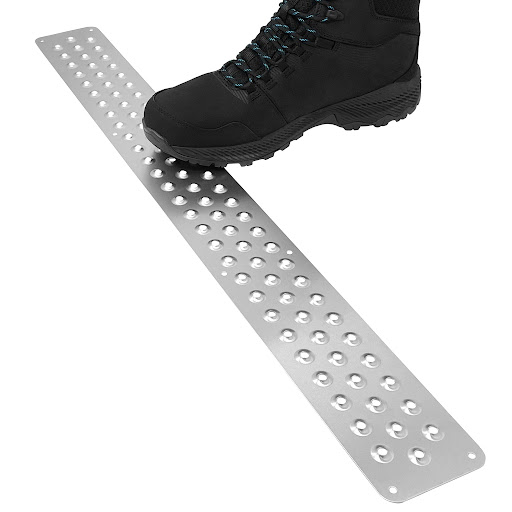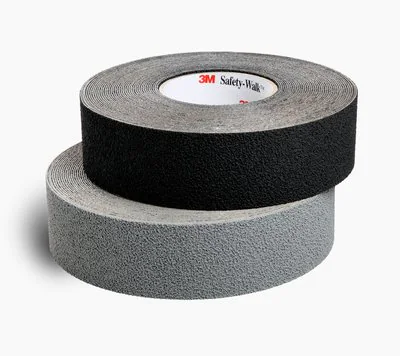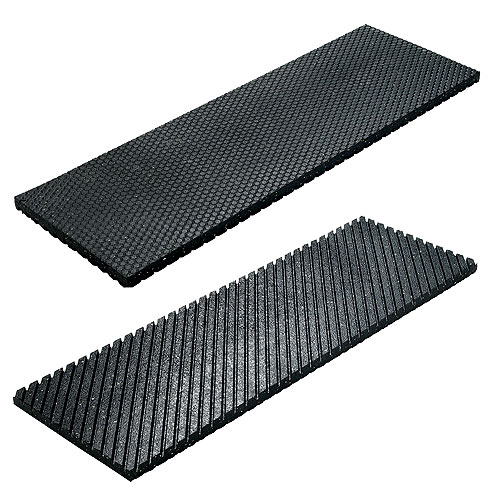Outdoors, I have some wooden stairs leading up to my front door.
The wooden stairs are covered in high-gloss wood preservative. In winter, snow and ice are deposited onto the stair-steps. The bottoms of my shoes slip and slide on the high gloss varnish.
What can I do to make the stairs less slippery?
do you recommend that I nail down rectangle-shaped pieces of carpet on top of the stairs?
can I glue pieces of sand-paper onto the stairs?
I have seen steel outdoor stair treads. These steel stair-treads had spikes on the top for high-grip in winter.
Would you recommend putting outdoor steel stair treads over top of the wooden stair treads?
Edits
In the comments section people asked me some things.
| Question | Answer |
|---|---|
| Where do you live? | the city of Denver, Colorado in the United States |
| Are you concerned more with liquid water (rain) or solid frozen ice? Are your stairs slippery when wet in warm weather? | my stairs are slippery when wet in warm weather. However, I slip more often (relativly speaking) on solid frozen ice in winter than on rain-spattered stairs in summer. |
| Is white compacted snow more of a problem or is clear water ice more of a probem? | both snow and ice make the wooden stairs slippery. A thin layer of perfect translucent water ice is more slippery than compacted snow, relativly speaking. Both had made my shoes slide on the varnished wood |





